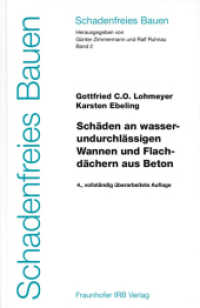Full Description
Sleep problems are among the most common, urgent and undermining troubles parents meet. This book describes Dilys Daws' pioneering method of therapy for sleep problems, honed over 40 years of work with families: brief psychoanalytic therapy with parents and infants together.
Offering tried and tested ways of helping parents work things out better with their babies when such problems arise, this new edition of Dilys Daws' classic work, updated with expert help from Sarah Sutton, frees professionals from the burden of feeling they need to rush to give advice to families, showing instead how to begin the challenging journey of discovering new emotions that every baby brings. It sheds light on the sleep problem in the context of a whole range of aspects of the early world: the regulation of babies' physiological states; dreams and nightmares; the development of separateness; separation and attachment problems; and connections with feeding and weaning.
This much-needed, compassionate and well-informed guide to helping parents and babies with sleep problems draws on twenty-first century development research and rich clinical wisdom to offer ways of understanding sleep problems in each individual family context, with all its particular pressures and possibilities. It will be treasured by new parents struggling with sleeplessness and is enormously valuable for anyone working with parents and their babies.
Contents
Preface Acknowledgements 01. What is a Sleep Problem? PART I 02. Brief Psychoanalytic Therapy for Sleep Problems 03. A Case Study: The Armitage Family PART II 04. The Physiology of Sleep States 05. Babies' Physiological States and Parenting 06. Dreams and Nightmares 07. The Development of Separateness of Self 08. Separation and Attachment Problems 09. The Connections of Sleep Problems with Feeding and Weaning 10. Parents' Own Childhood Experiences 11. Father's Role, the Parents' Relationship, Single Parents and Returning to Work 12. Disturbed Sleep as a Psychosomatic Problem 13. Mother's mental health and wellbeing 14. Children with particulat needs and abilities CONCLUSION Bibliography Index







